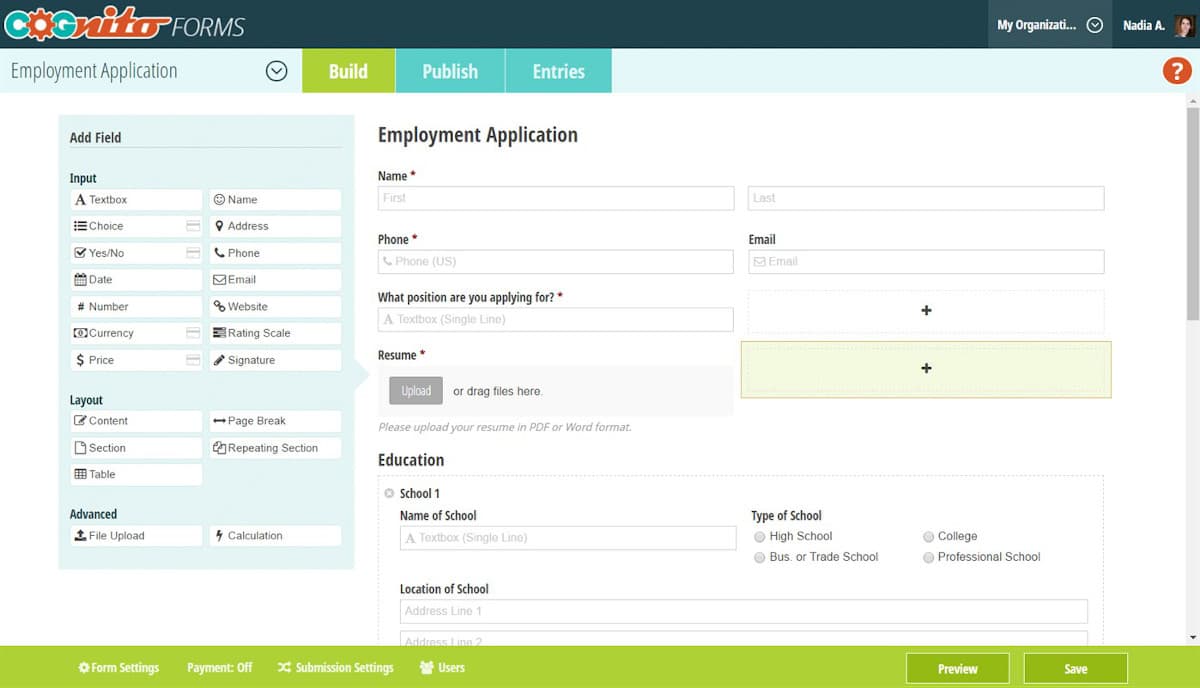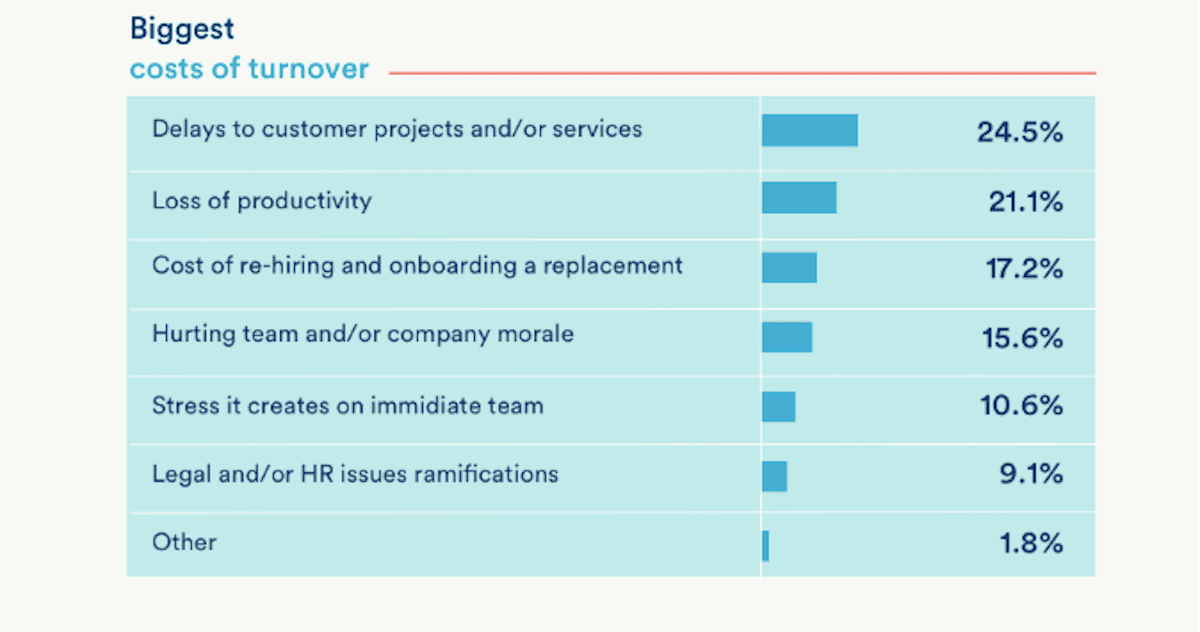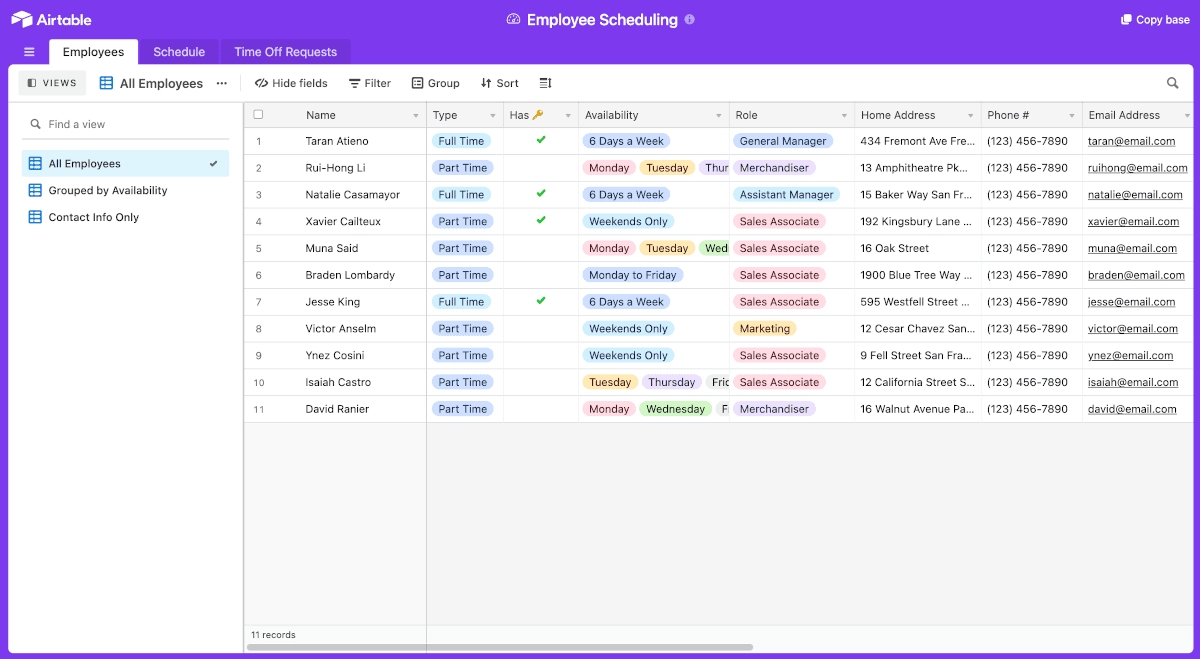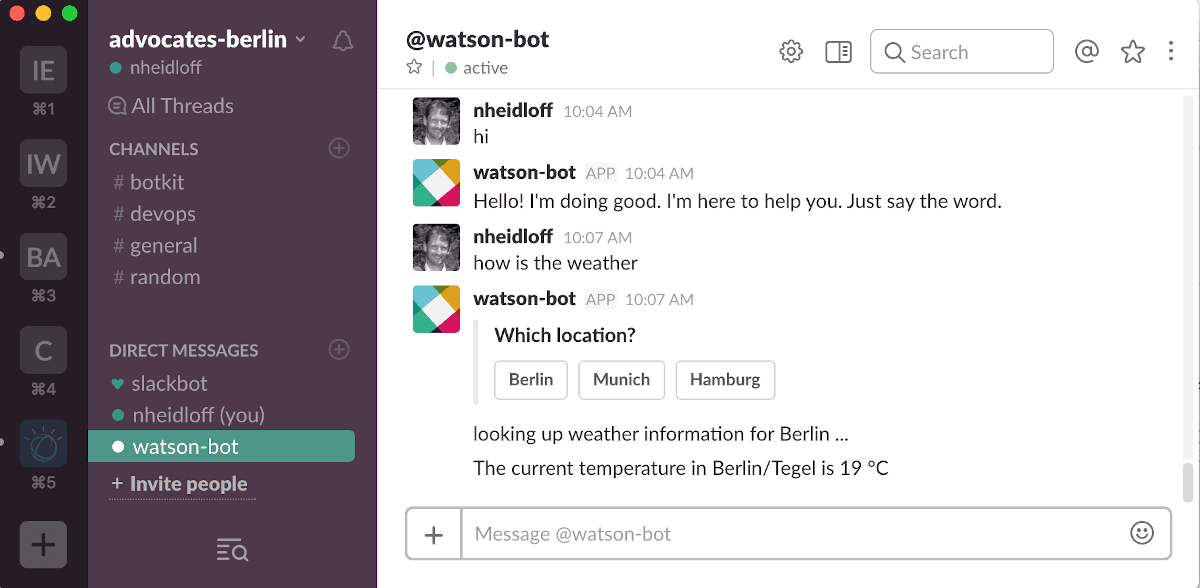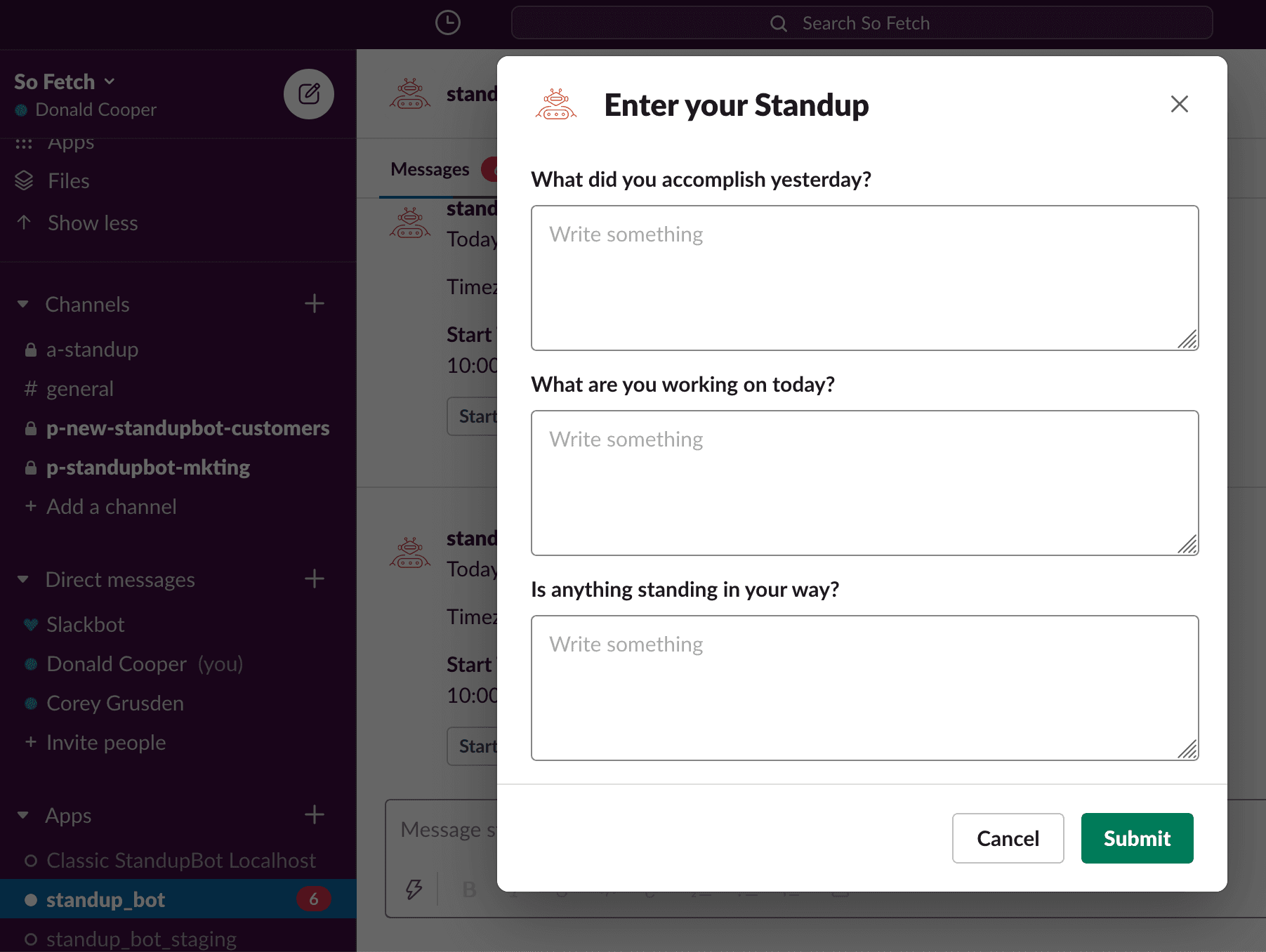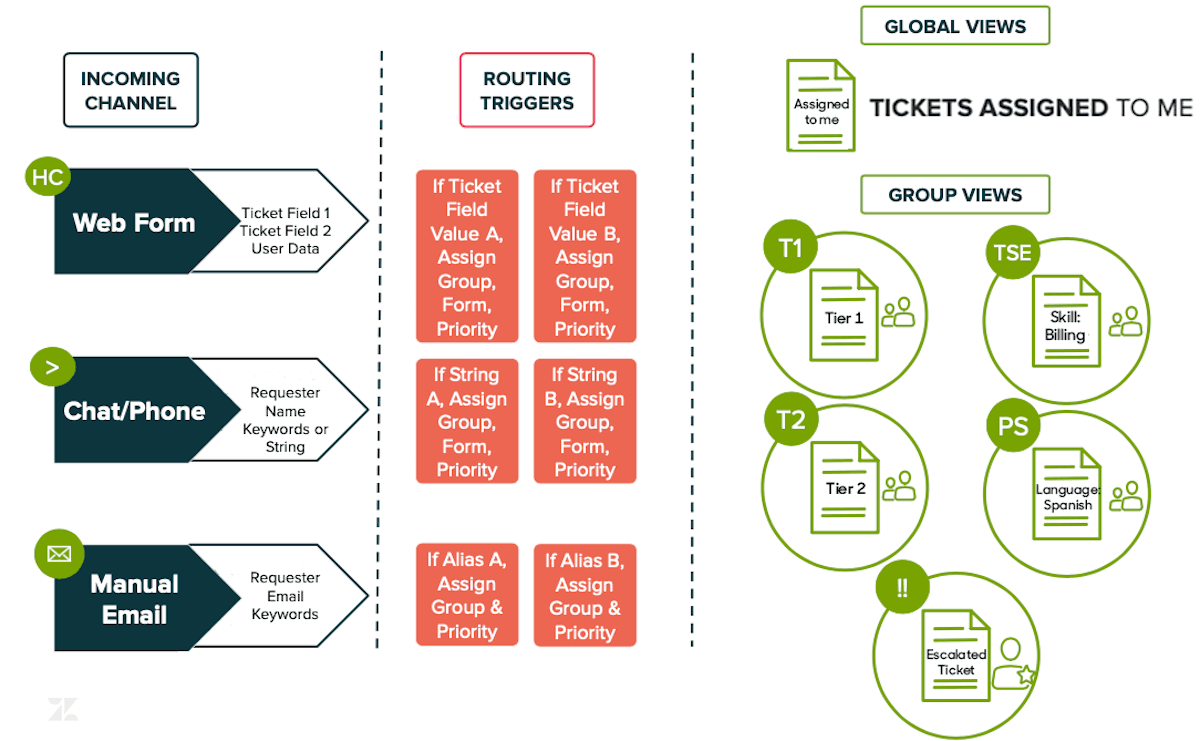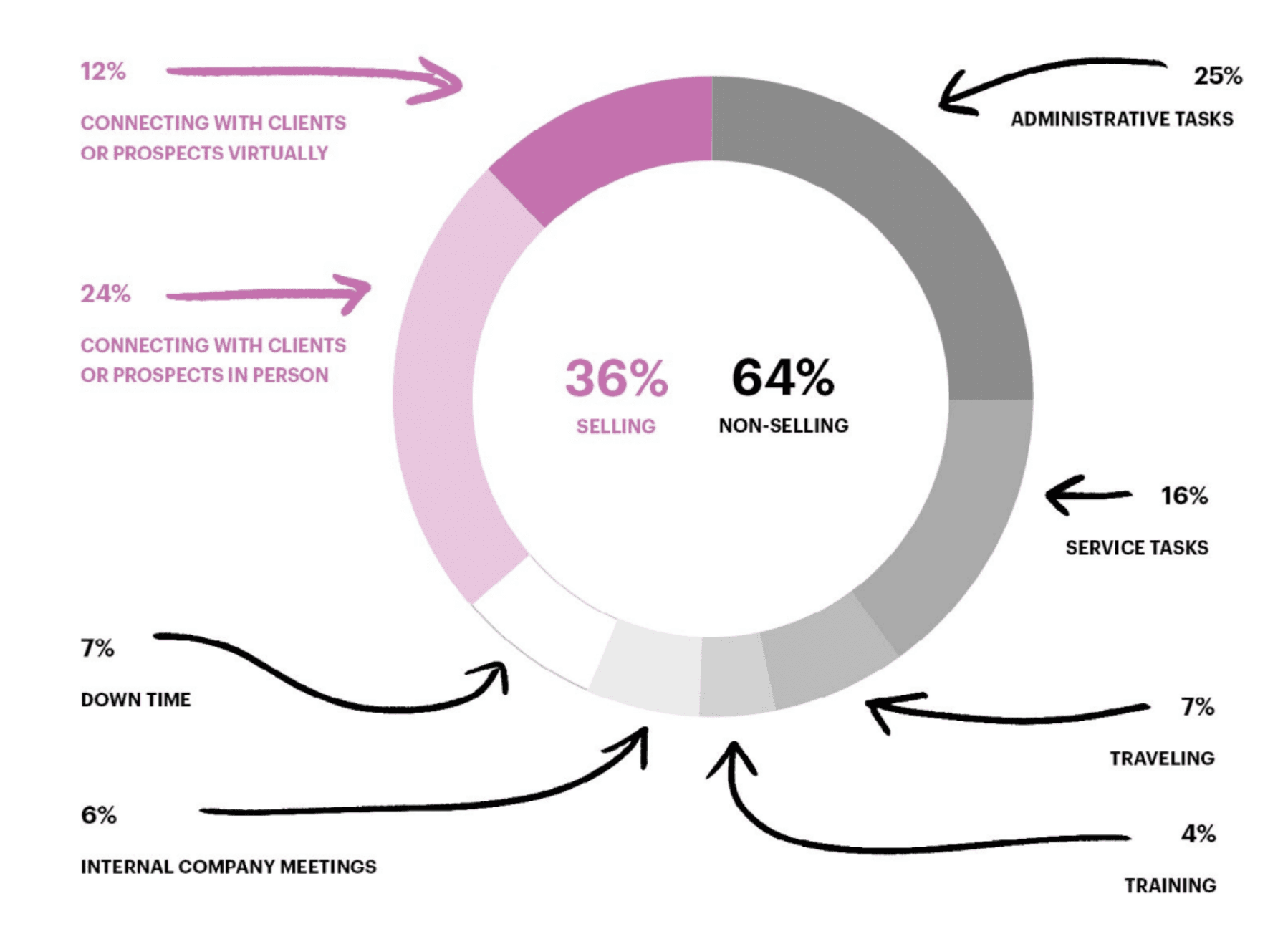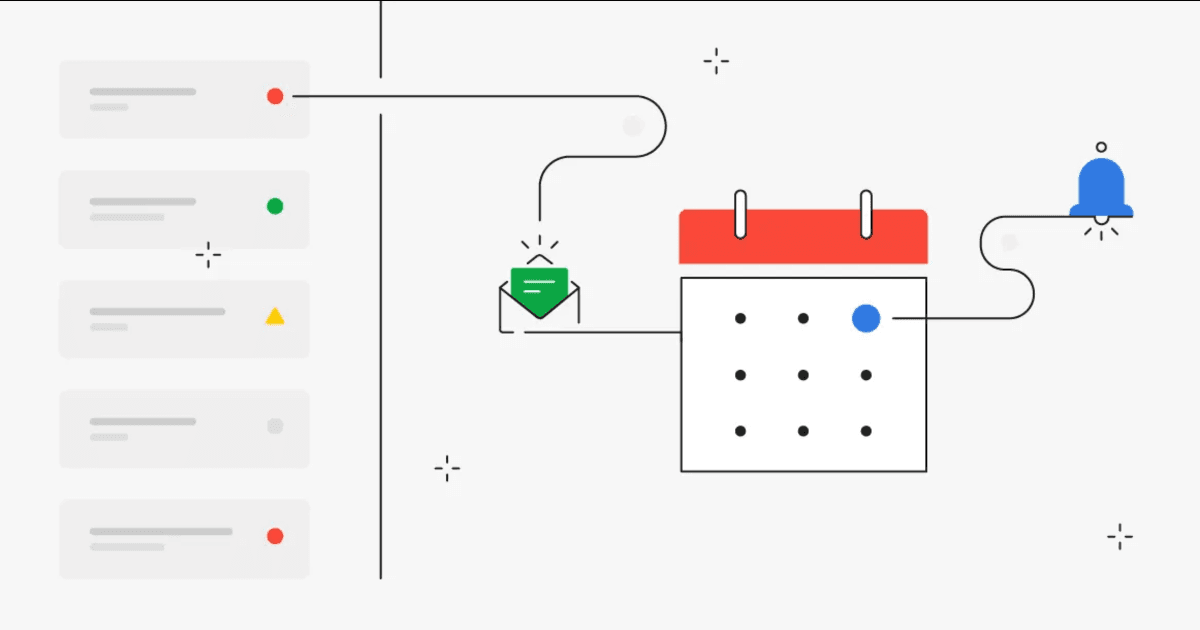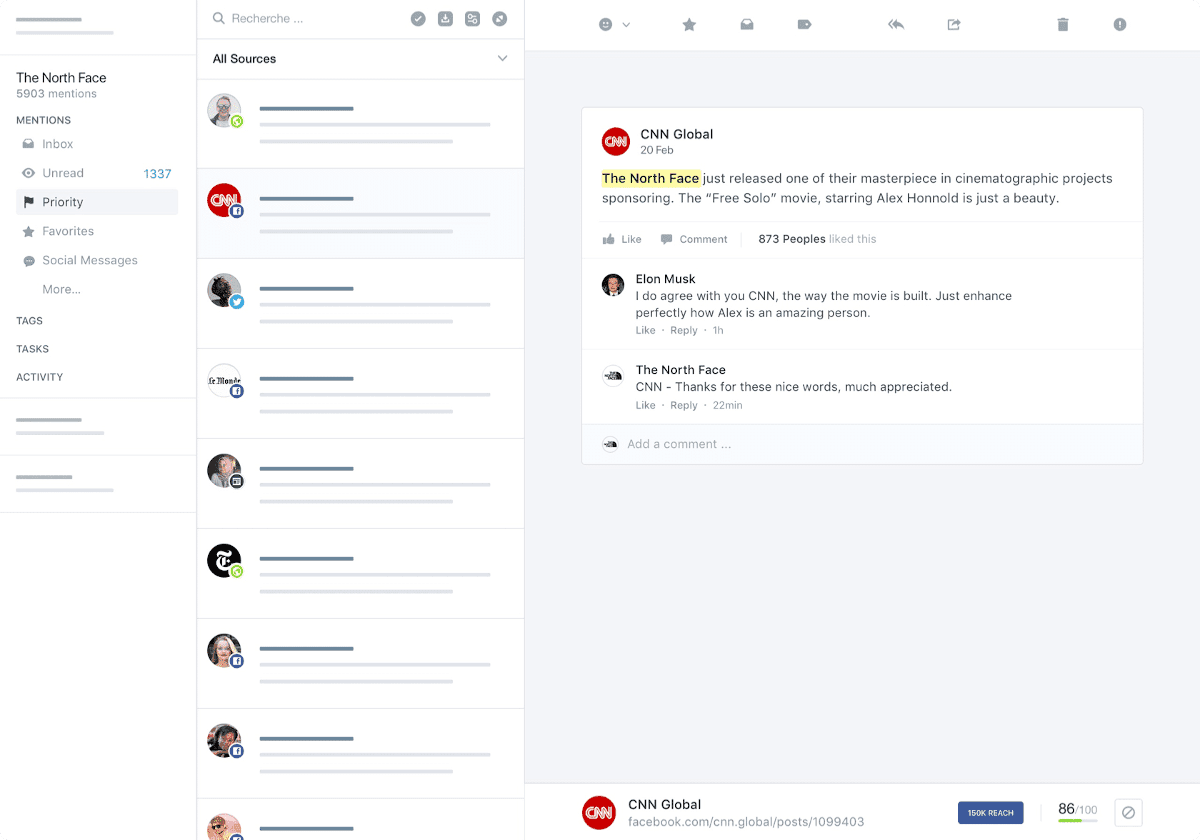Apr 8, 2021 | 17 minutes
25 Simple Workplace Automation Ideas for Teams Under 25 Employees
Get inspired by our curated selection of workplace automation ideas, and take your small business to the next level of efficiency and productivity.

Running a small business is tough. From budget constraints to multitasking, small teams have to be resourceful and innovative to survive.
There are no doubts that the rewards can be high, but so are the risks. Out of all new businesses starting up (4.41 million in the US in 2020), only half survive their first year.
Clearly, small teams need all the help they can get. And this is what makes workplace automation an important factor in their success. But what is workplace automation in the first place?
In its simplest acceptance, workplace automation is the process of leveraging technology to complete tasks without human involvement.
In other words, workplace automation is using software to fulfill repetitive tasks that:
Take too much time
Drive up costs
Don’t really require human input to be completed
These tasks can range from generic (such as sending form data into a spreadsheet) to custom processes involving many apps and steps.
Before we go into workplace automation examples, let’s take a quick look at the benefits it can bring to teams under 25.
7 instant benefits of workplace automation
Smaller teams are typically low on resources, but they have an advantage: flexibility. This allows them to automate the workplace faster than larger businesses.
Now, let’s take a look into the benefits workplace automation brings to SMBs.
1. Edge over competitors
Saying that competition is fierce might sound cliché, but it isn’t. Data shows that applications for launching a business have nearly doubled over the last decade.
With more businesses hitting the market, automation can provide the necessary edge to beat competitors.
Automated processes empower small teams to turn their ambitions into reality, regardless of:
Budget
Head count
Traditional entry barriers to entry
A great example of this can be seen in the case of finn.auto, the German car subscription company.
By implementing automation early on, finn.auto managed to build a successful business to compete in equal footing with industry giants like Cadillac, Porsche, and Volvo.
2. Reduced labor costs
For most businesses, the biggest cost is labor.
It can account for as much as 70% of total business costs, once you factor in employee wages, benefits, and payroll.
In many sectors - such as technology - labor costs make it even harder to compete:
Image credit: Payscale
With rising labor costs, small businesses have to make sure they’re spending appropriately.
By reducing the amount of human input needed, automation can help keep those costs in check.
3. Easy to adopt
According to a McKinsey study, 31% of businesses have automated at least one process.
It goes without saying that some companies automate because they need to, but also because it’s fairly accessible to do so.
Thanks to no-code tools like Make, automation no longer requires extensive technical skills.
As a result, it only takes a curious mind to build and implement automated workflows.
4. Happier employees
Happy employees are good for business.
On the other hand, overworked and unhappy employees are not. It has been reported that burned-out workers are:
60% more likely to take a sick day
2 ½ times more likely to be seeking for a new job
Less likely to discuss performance goals with managers due to lower confidence
That is not counting the financial impact of burnout, which costs the economy between $125-$190 billion a year.
By helping workers streamline the repetitive, automation can help reduce these issues before it’s too late.
5. Remote-friendly
Remote work has become the new normal for millions due to the COVID-19 pandemic.
While this has brought new challenges, it also served as an opportunity to shape the future of work.
Chris Herd, Founder & CEO of Firstbase, has listed automation as one of the main factors that will help establish remote work as the norm in the upcoming years.
And it’s true. Automation makes remote work easier by:
Facilitating communications across different time zones
Tracking activity and feedback across teams
Decreasing redundancy and eliminating task blockers
6. Transparency
Workplace automation can help track most business metrics, allowing for better management.
This heightened awareness can result in educated strategy decisions, instead of “winging it”.
7. Increased productivity and efficiency
Automation has historically been linked to productivity.
Data-backed research shows that automation has a positive impact on that front.
Image credit: ServiceNow
As far as Make is concerned, the proof is in the pudding. By connecting 3 apps together this German consulting firm observed a 17% efficiency increase.
Results, not excuses.
Workplace automation sounds like a charm, but that’s certainly not enough to get started. Figuring out what to automate can be tricky and intimidating.
Fret not. We’ve put together a list of 25 workplace automation ideas to get you inspired.
Sometimes, that’s all it takes to start automating!
25 workplace automation ideas
Our list of workplace automation ideas encompasses five categories:
Communication and project management
Human resources and operations
Customer support
Sales
Marketing
In addition, you will find that the ideas fall within three different types of solutions, including:
Native automation product features that are available in business software
Dedicated tools serving a specific automation purpose
Comprehensive automation platforms like Make
Each option has their pros and cons, and we invite you to evaluate what fits your business best.
Operations and human resources
1. Using forms to streamline your recruiting process
Hiring is critical for smaller teams. When the headcount is low, new hires can make a significant impact in how a company operates.
However, hiring is hard, and demands many tasks to be completed, such as:
Drafting the job posting
Posting on job boards and social networks
Going through applications
Shortlisting applicants
Conducting interview rounds
Sending contracts and other onboarding documents
While human involvement is necessary, many of these steps can be automated.
For example, online forms can help you automate sorting through applications in an easy, no-frills manner.
Solutions like Cognito Forms allow you to setup an application form to sort through the applicants based on their answers:
Image credit: Microsoft
This makes a world of difference when you’re going through dozens or even hundreds of applications.
2. Improving employee onboarding
A great onboarding experience can improve employee retention by 82%, and productivity by over 70%.
On the other hand, the cost of turnover per employee typically ranges from 100–300% of the individual’s salary.
Image credit: Zenefits
Automated onboarding workflows can help you accelerate the process without losing resources.
Onboarding tasks you can automate include:
Ahead of the first day: Sending the contract, directions to the office, other informational resources
On the first day: Sharing a handbook and documents about the company and role
On the first week: Adding the new hire to Slack channels, providing an email address, auto-scheduling meetings with the team or with an onboarding buddy
3. Collaborative scheduling
Shifts and scheduling are better without messy spreadsheets and time-consuming back and forths.
To avoid confusion, teams can use dedicated scheduling tools such as findmyshift. This platform features automatic notifications for shift changes. Plus, it provides every staff member with a shared interface to keep track of the schedule.
You can also create your own custom system. Setting up a collaborative schedule on Airtable is relatively easy with existing templates. In addition, you can set up automated notifications with Make.
Image credit: Airtable
4. Automated reporting
Reports are key to visualize operations and performance. However, not many SMBs can spare the time to create them.
This is a typical task that can be automated with Make. Simply pull the data generated by other tools, and push it to a spreadsheet or KPI board.
You’ll get all the metrics, without any of the data-gathering hassle.
Image credit: Reddit
5. Accounting automation
Without proper accounting, managing small business finances can quickly become a nightmare for owners. As a matter of fact, it has been reported that nearly a third of companies fail because they run out of cash.
While we acknowledge that accounting is a very diverse field, some areas can benefit from automation. This is especially true for small businesses that might have one person to manage finances.
Collaboration & Project Management
However small your business or team, communication and collaboration is key.
In this line, project management and internal communications are areas that can be improved with automation. Let’s see how.
6. Avoiding communication silos by leveraging notifications
Silos are a threat to teams, in disregard of size.
Without visibility, critical data might stay stuck in an inbox or a Slack DM, away from key stakeholders.
Tools like MailClark or Front help create a shared inbox for your team. These allow stakeholders to have more visibility on conversations.
Another option is to leverage bots. Slack bots, for example, can automatically run tasks and report on shared channels or via direct messages.
There are many Slack bots you can easily implement, as well as their equivalent on the Microsoft Teams platform.
Image credit: Niklas Heidloff
7. Auto-forwarding emails to relevant stakeholders
We spend 17 hours every week on reading, replying to and writing emails.
If this sounds like a lot, that’s because it is. A lot of internal email communication is time-consuming and should be automated.
A simple way to do this is by setting up auto-forwarding rules in your email client. By doing this, you can make sure that relevant stakeholders get the information they need, when they need it.
If you want to try this out, you can use this scenario.
It helps you forward emails containing a specific word to whoever needs to know about it.
8. Reducing manual input in project management
A smaller team does not translate into easy project management.
PMs at small companies tend to take on more responsibilities, making their role even more challenging.
Project management tools are designed to help teams organize tasks and improve collaboration. It has been observed that companies with project management practices save 28 times more money than those that do not.
There are plenty of platforms to choose from:
Trello: Visual, kanban style list-making app
Asana: Collaboration tool focused on simplicity
ClickUp: Productivity platform packed with features
Basecamp: All-in-one toolkit for working remotely
Integrating these tools within your software stack will allow you to automate your project management processes. Some ideas you can consider include:
Sending automated tasks reminders
Adding tasks automatically from other tools (CRM for example)
Notifying stakeholders of progress made
Moving tasks between stages of completion automatically
Initiate an associated workflow when a task is created
9. Promoting daily interactions using a Slackbot
Standup meetings are widely used by teams running on deadlines. Their goal is to keep every member accountable and to make sure no one is left behind.
If you want to guarantee participation in standup meetings, automation is your friend (even if your team is fully remote).
For example, you can invite your team to answer 3 questions, automatically and on a daily basis:
What did you complete yesterday?
What are you working on today?
Is anything standing in your way?
A simple Slackbot will automatically post the questions and collect answers.
To do this, you can choose paid options like Geekbot or Standup Bot, or build your own.
This can be done directly from your Slack workspace settings or using Make as well.
Image credit: Standup Bot
10. Supercharging your internal knowledge base
Documenting is not always a priority in smaller businesses. This often results in risk, with employees potentially becoming a single point of failure.
This is why companies decide to implement an internal knowledge base.
Having a database of resources has been proven to reduce employee research time by as much as 35%. This can have an impact on several areas of operations, from productivity to the ability to answer customer queries in time.
However, as internal knowledge bases grow, it can be difficult to keep it organized.
To solve this, you can add an automation layer. Tools like Spoke allow users to fetch information from the base by asking a bot in Slack or Microsoft Teams.
Customer support
For small teams with limited hands on deck, automation is a lifeline.
Here are some examples of customer support automation ideas that can make a real difference.
11. Automatic replies to inquiries
Sending an automatic email after receiving an inquiry can make a big difference for your customers.
Studies have shown that waiting just 10 minutes to respond to a message drops the likelihood of qualifying a lead by 4.
Whether you’re receiving requests by forms, email or chat, a simple templated answer can buy your customer service reps some time:
“Hello {first_name}, thank you for reaching out! We will get back to you shortly, in the meantime feel free to give us more details about your inquiry.”
Customer support software solutions like Zendesk offer similar features. You can detect if your customer support team is idle, or send a predetermined message during off hours.
12. Automating user feedback with forms
Customer service reps are the frontline workers of your business, and are a great source of information. This information is precious, but can also get lost along other tasks and priorities.
The solution is to automate user feedback using forms.
How? Simply send out forms to clients following their purchase, once their trial is over or after interacting with your team.
You can then use Make to route their answers directly to your customer service platform, turning them into tickets that you can address in time.
Use this template to automatically create Zendesk tickets from new Google Forms responses.
13. Leveraging your knowledge base to weed out support request
Customer-facing help centers are another way to assist customers.
90% of customers want an immediate answer to their customer service question. Unless you’re planning to expand your team, providing a self-serve solution is the way to go.
Tools like Document360, HelpCrunch or HelpSite can help you implement such a solution. Automation can then jump in to:
Automatically direct customers to the knowledge base via a chatbot
Cross-post content between your internal and external knowledge base
Auto-publish new knowledge base articles in your blog, or on social media
14. Helping customers in online communities
Interacting with users in a community has several benefits:
Build an engaged user base
Promote transparent, public customer support
Receive organic feedback and suggestions
Most platforms feature notifications that will alert you when a message has been posted.
However, you might not want to spend your day monitoring and jumping in conversations.
Using Make, you can set up filters to notify when a message has been left unanswered for over an hour, for example.
Another idea would be to automatically send a private message to users posting threads featuring certain words (“disappointed”, “cancel”, “unsubscribe”, etc).
15. Automating ticket routing
First reply time (FRT) is a reference metric for customer support effectiveness. Effective FRT varies depending on the channel, but the usual hallmarks are:
For emails: 1 hour or less
On social media: 15 minutes or less
On live chat: 1 minute or less
Of course, automated responses do not count towards FRT.
In order to optimize ticket handling, automated ticket routing can help a lot.
This can be achieved by labelling requests, and then matching them with the best agent for the job.
Automated ticket routing can be achieved by using a ticketing platform offering the feature, or by using Make to create the workflow.
Image credit: Zendesk
Sales
Sales is one of the most automation-friendly areas of business. To understand why, consider some of the tasks a salesperson conducts on a daily basis:
Sending email reminders
Filling out information in the company CRM
Finding leads through different channels
Enriching leads by finding information online
Drafting proposals
You might have noticed that none of these are directly related to selling, which of course hurts sales.
Image credit: Intercom
Workplace automation can help you automate some of these tasks, so salespeople can spend more time selling. Here are some ideas:
16. Handling meetings automatically
Meetings are at the heart of a sales, and can quickly become a nightmare. Much like the rest of a salesperson’s activities, they come with a lot more tasks than the meeting itself:
Back and forth to decide on a time
Adding the meeting in the calendar
Handling cancellations and rain checks
Sending reminders before the scheduled time
Following up after the meeting
Appointment scheduling tools like Calendly are helpful here. You can share a link displaying availability, receive and send reminders, and give the option to reschedule meetings.
Automation comes next, as native integrations or an automation platform can come in and facilitate the extra tasks mentioned above.
17. Qualifying leads with forms and adding them to your CRM
As a salesperson, having a fully-booked day of demos and meetings is usually a great feeling. However, low-quality leads can make that feeling go away real quick.
To make sure there’s a fit, most companies usually have a system in place. A sales development representative (SDR) might have an intro call to establish whether the basic requirements are met on both sides before moving forward.
As a small team, you might not have that luxury.
Forms are a great way to automate that process. You can ask these questions and qualify leads beforehand, without dedicating your sales team’s precious time and energy.
18. Enriching leads by putting research on autopilot
Sales involves a lot of copying and pasting.
While this is accepted as part of the job, it’s ineffective and inaccurate.
“30-50% of CRM and ERP data is inaccurate.”
- Henry Schuck, Founder, and CEO of ZoomInfo.
One of the benefits of workplace automation is accuracy. Even the best and most dedicated sales rep makes mistakes. Automation rarely does.
Lead enrichment tools like Clearbit or InsideView help cut down on a lot of the research. Alternatively, Make allows for quick research by pulling key data from LinkedIn.
Use this template to automatically pull LinkedIn contact info to a new HubSpot CRM company.
19. Following up on leads with an email
The meeting is only just the beginning. Studies have shown that 80% of sales require 5 follow-up calls, but 44% of salespeople give up after one.
Most CRM platforms - including Pipedrive, HubSpot or Salesforce - feature the option of email follow-ups.
If your CRM doesn’t, Make can take over by connecting it to your preferred email outreach tool.
Image credit: Pipedrive
20. Creating sales documents automatically
Sales teams spend a lot of time dealing with documents. It has been reported that 59% of sales managers think agreement preparation takes too much time.
What’s worse, salespeople are also involved in crafting the materials, including:
Legally-binding contracts
Personalized proposals
Leaflets and sales collaterals
Presentations
This is a typical automation use case.
A platform like Make can help pull data from a CRM and automate document creation. For example, whenever a lead reaches a certain stage in the pipeline, a custom doc is created.
Marketing
Digital marketing has become a staple for modern consumers, who now expect personalized, tailored experiences.
As a result, global spend on marketing automation is predicted to reach $25B by 2023.
Yet, for a lot of small businesses, marketing is still not a priority. There are a few reasons for that:
Cost: Tools and hires can be expensive
Confusing: Too many options to choose from
Hard to track: ROI can be hard to measure
Platforms like Pardot or HubSpot offer advanced options to cater to customers, deliver campaigns and track your marketing efforts accurately. But costs can quickly add up.
Let’s look at some affordable automation ideas you can implement today without breaking the bank.
21. Automated social media posting
Social media is the preferred advertising platform for SMBs, with 64% of small businesses using it in their marketing strategy.
Buffer and Hootsuite can be used to automate the publishing of content.
If you’re ready to go a bit deeper, Make offers advanced capabilities. This scenario takes Airtable records (with images) and turns them into social media posts for you. This is a powerful way to automate your social media efforts across all platforms.
22. Monitoring online mentions
Tracking social conversations where your company hasn’t been tagged can help you:
Gather feedback
Identify potential issues
Create genuine moments
Find opportunities
Tools like Mention or help you monitor mentions of your brand online. If you prefer to monitor specific keywords, you can always automate brand mention tracking using Make.
Image credit: Mention
23. Sending automated drip campaigns and transactional emails
Email marketing has the highest return on investment for small businesses, with a reported $42 for ever $1 spent.
From reminding customers of their abandoned cart to sending birthday messages or promotions, the possibilities are endless.
Using email marketing platforms like Campaign Monitor or Mailchimp will help you craft beautiful emails with smart fields, and take care of their delivery for you.
These platforms allow you to integrate with some of your tech stack and configure triggers. This way, customers can be enrolled in an email campaign based on their actions or their profile.
Make can then be employed to add another layer of automation.
24. Verifying emails to stay out of the spam folder
There’s a basic email marketing rule many overlook: you have to make it into the inbox before anything else.
Getting stuck in the spam folder is no fun. It will also impact your email open rates, click rates, and conversions.
Tools like Clearout or ZeroBounce help you make sure your list is good to go. Using Make, you can integrate these tools to run automatic checks for new subscribers, for example.
Image credit: G2
25. Staying on top of your analytics with daily reports
Tools like Google Analytics or Kissmetrics provide valuable information that has to be checked on a daily basis:
Website performance
Results from acquisition campaigns
Best performing channels
Audience insights and behaviors
Automation is a great way to stay on top of it.
Using Make, you can easily configure a daily report to be sent directly to your preferred communication platform.
Use this template to receive a daily Google Analytics report of the previous day on Slack.
Conclusion
Workplace automation is a fascinating field with nearly endless possibilities.
We are convinced that it can help teams stand out in a very competitive global economy.
Before you go, remember that automation isn’t a magic trick nor the be-all and end-all of business.
Some things cannot (and should not) be automated. Be mindful when deciding what to automate, keeping in mind these basic principles as you start experimenting:
Start small: A day-to-day task such as setting up a notification for yourself is a great place to start
Pick repetitive tasks: The more this task can run, the better you’ll feel about automating it
Begin with low stakes: Maybe don’t start with an automated email to your 15,000 subscribers list
We hope that you’ve been inspired to try and explore automation in your business.
Happy automating!
Ready to make the automation revolution happen?





